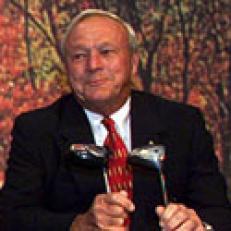My Five: Most Painful Short Misses
Sam Snead, 1947 U.S. OpenSnead's Achilles heel was short putting, and his miss on the 18th hole of the playoff with Lew Worsham at St. Louis C.C. hurt more than any other. Snead had led by two with three to play, but the pair came to the last tied. After Worsham chipped close, Snead left his 18 footer short. As he got ready to putt out, Worsham stopped him to question who was away. Rules official Ike Grainger measured the putts, determining that Snead was 30 ½ inches away and Worsham 29 ½. But the delay took five minutes, and when Snead finally putted he missed weakly to the right. Worsham then made his. It started Snead on a long bout of the yips that didn't end until he won 11 tournaments in 1950. The yips would return, and of course, Snead never won the U.S. Open.
Photo By: AP Photo
Ben Hogan, 1946 MastersHerman Keiser had three-putted the last green when Hogan, now tied for the lead, hit his approach 25 feet above the cup. Still without a major at age 33, Hogan's first putt trickled past, the reported distance ranging from two feet to four feet. He missed the comebacker, and two months later would also three putt the final green at the U.S. Open from an even shorter distance. However, the unshakable Hogan regrouped to win the PGA Championship -- his first major -- capping off a 13-win season that stands second only to Byron Nelson's 18 victories in 1945. It was in 1946, Hogan said, that he made the crucial breakthrough in his golf swing that would lead -- pre-car accident -- to what he considered the finest golf of his career.
Photo By: AP Photo
Hubert Green, 1978 MastersGary Player had posted the best closing round in tournament history with a 64, when in the last group Green, the reigning U.S. Open champion who had begun the day with a three-shot lead, hit a brilliant approach three feet from the cup. As Green got ready the stroke the putt to tie, the voice of radio man Jim Kelly distracted him and he stepped away. After getting reset, one of the game's best putters -- who had won 13 tournaments in the preceding five seasons -- pushed the putt wide, giving Player his third Green Jacket. After the closing ceremonies, Green went back to the green and hit the putt many times. Green stopped winning as frequently, though he found some late-career redemption when he won the 1985 PGA Championship.
Photo By: Stephen Szurlej
John Daly, 2005 WGC American Express ChampionshipPlaying some of the best golf of his career, Daly led by two with three to play at Harding Park in San Francisco before falling into a tie with Tiger Woods in regulation. The atmosphere was electric, and on the first playoff hole, the long 18th, both blasted drives over Lake Merced in the 330 yard range. On the second hole of sudden death, Woods missed a 25 foot birdie putt and tapped in, leaving Daly with a 14 footer for the victory. He ran it three feet by, then, putting quickly, missed the par putt. On his way to the clubhouse, Daly gave his putter to a spectator. Daly hasn't contended in a tournament since, as the putter has become the weakest club in his bag.
Photo By: J.D. Cuban
Stewart Cink, 2001 U.S. OpenCink was paired with Retief Goosen in the final group at Southern Hills. Trailing by a shot on the 72nd hole, with Goosen only 12 feet away for par, Cink believed his 15-footer for par was do or die. He barely missed, leaving an 18-inch comebacker. Deciding to putt out in order to give Goosen the stage, Cink rushed his stroke and incredibly missed the hole to the right. As Goosen left his putt two feet short and then just as incredibly missed for the win, Cink was hit with the horrible realization that his tap in would have gotten him into a playoff with Goosen and Mark Brooks. The miss threw him into a slump, which he finally emerged from with the help of therapist Dr. Preston Waddington, a process Cink has been open about. After an initial successful switch to the long putter, Cink has returned to a conventional style and is now considered one of the tour's best on the greens.
Photo By: Harry How/Getty Images




